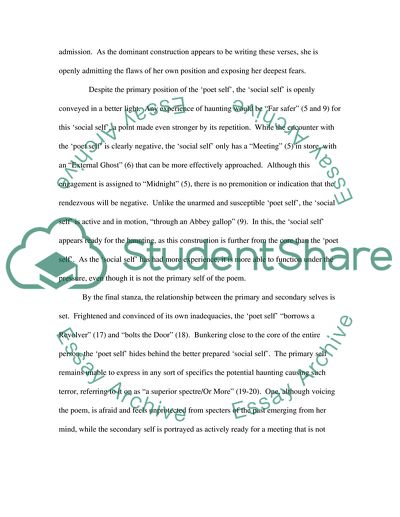The Relationship between the Selves: A Consideration of Emily Essay. Retrieved from https://studentshare.org/literature/1535629-the-relationship-between-the-selves-a-consideration-of-emily-dickensons-poem-670
The Relationship Between the Selves: A Consideration of Emily Essay. https://studentshare.org/literature/1535629-the-relationship-between-the-selves-a-consideration-of-emily-dickensons-poem-670.


